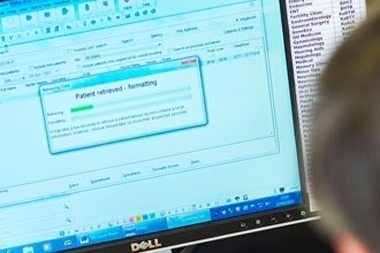Ibstock House Surgery is based in semi-rural North West Leicestershire, with 10,000 patients on our list. We are a five partner training practice and have two salaried doctors. We were struggling to cope with patient demand for appointments and found that our work-life balance was deteriorating. Our surgery times were frequently extended by more than an hour a day because of squeezing in ‘extras’ who waited at the end of surgery to be seen. As a result of this one of our partners left.
What we did
Six months ago, we implemented a telephone triage system in which no patient is seen by a GP face-to-face unless they have spoken to a doctor on the phone, or been requested to make an appointment because of a letter received, a blood test result, or as a planned follow up from a previous appointment.
All doctors including the duty doctor do telephone triage for the first hour and a half of morning surgery. The patient phones reception, the receptionist takes brief details (to determine which GP is most appropriate for the patient to be booked with and whether the patient requires an urgent call back), then books an appointment with a doctor who phones the patient back for a five minute phone consultation.
The remaining hour of morning surgery is set aside for patients who need to be seen that morning following the telephone consultation and those that the doctor had requested a telephone appointment with because of a letter or blood result. The duty doctor can also book each doctor to see three patients who require a same day appointment. The duty doctor books any future appointments with the most appropriate GP (we all have ‘specialist’ areas), which means that the patients see the appropriate doctor the first time.
The afternoon surgery is still one and a half hours long but has been altered to one hour of pre-bookable appointments. The remaining half hour consists of six five minute slots for the duty doctor to use for patients requiring a same day appointment – the duty doctor has already taken a history so normally a full 10 minute appointment is not necessary.
As recruiting a replacement GP was proving problematic, we employed an Emergency Care Practitioner (ECP). She supports the duty doctor, seeing the majority of patients who require a same day appointment and doing the majority of home visits.
Patients can still see nurses and health care assistants without speaking to a GP first.
Challenges
This was 12-18 months in the making, and all our doctors had to upskill their telephone triage skills. We had many meetings to ensure that both doctors and staff knew how the system would work and advertised the change widely, including on our website and posters.
We have a very active patient participation group (PPG) and they were consulted about the changes. Our PPG members spent considerable time in the surgery explaining to patients how the new system would work, both before commencing the change and after the change. Since we are in a village, it is a tight community and we knew they might be wary of change.
Results
Initially the new system seemed to make things worse – we seemed busier than ever, with far more extras and a longer on-call list. However with time we have found that demand has reduced and that the on calls have become more pleasant. We think that this is because with the new system we are able to educate patients about what is appropriate to be seen the same day – for example, patients with colds of a few days’ duration receive self-care advice on the phone instead of a face-to-face appointment. In addition patients with longstanding health problems are given a face-to-face appointment with the most appropriate doctor the first time.
The most noticeable benefit is that we all have much fewer ‘extras’ squeezed onto the end of surgery than before. Extras used to add 45 minutes to morning surgery, and half an hour to afternoon surgery, but now surgery tends to stay within its designated time limits. This means that we all get to go home earlier than before, significantly improving our quality of life. Combined with our ECP doing the majority of visits, this means that we have more time during the day to do our paperwork and to concentrate on the various QOF and QIPP areas as well as engaging with the business aspects of running a practice. For example, I now have weekly meetings with my managers and we can mentor those being upskilled, such as our new pharmacist. For same-day appointments, the DNA rate is now almost zero.
In addition, the reception staff now have time to support our healthcare assistants and nurses with the administration tasks that they previously did as part of the various QOF and QUIP areas.
Patient feedback has been excellent especially regarding access and also getting to see the right doctor the first time for a face-to-face appointment.
Dr Saurabh Johri is a GP partner in Ibstock, Leicestershire and the Clinical Lead for the Leicester, Leicestershire & Rutland NHS 111 and Out of Hours Service on behalf of West Leicestershire CCG
Pulse October survey
Take our July 2025 survey to potentially win £1.000 worth of tokens













